Story of Tipu Sultan
Tiger of Mysore in India
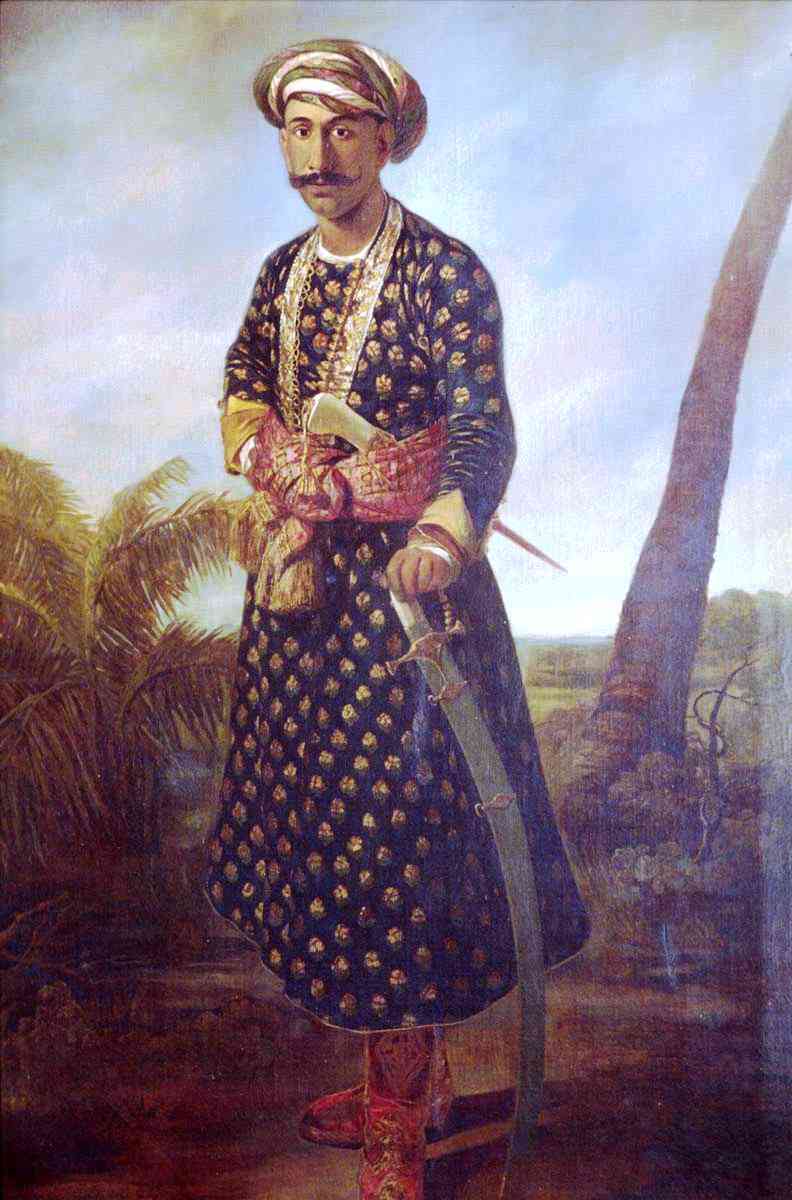
Tipu Sultan’s Early Years – Childhood & Adolescence
Tipu Sultan of Mysore was an inspiring and fascinating personality of the Indian history.
His actual name was Fateh Ali as originally named by his parents Hyder Ali and Begum Fatima Fakhar un-Nisa (Hyder Ali’s second wife).
Later he was given the nick name of ‘Tipu’ inspired by the local Saint Tipu Mastan Aulia in the region at that time.
Tipu Sultan is usually known now as the "Tiger of Mysore."
Fateh Ali was born in 1750 in Devanhalli which was located very close to Devanhalli Fort. The area around that place was known as ‘Khas Bagh’. \
Currently, it is now a part of Mangalore (earlier Bangalore in India)
As Tipu Sultan was a son of a Sultan, he had some of the best tutors to teach him various skills like riding, shooting, swordsmanship.
Growing up, Tipu received a good education that included military training, riding, swordsmanship, and shooting. He was exposed to politics and military affairs from a young age, often accompanying his father on military campaigns.
In 1766, at the age of 15, Tipu Sultan got his first taste of battle when he accompanied his father in the First Mysore War against the British East India Company. This marked the beginning of Tipu's lifelong struggle against Britis colonialism.
Tipu Sultan first hands on war experience started at age 15 with his own around 3000 soldiers and captured the Malabar Chief and made him surrender.
Tipu Sultan fought alongside his father in many battles over the years, including the Second Mysore War from 1780-1784.
He played a crucial role in the Mysore army's victories against the British, such as at the Battle of Pollilur in 1780 where he inflicted a major defeat on the British forces.
Tipu Sultan’s Coronation
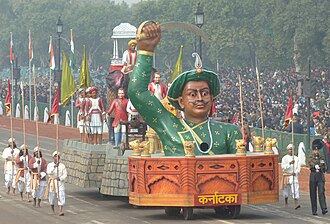
In 1782, Hyder Ali died from cancer, and Tipu Sultan became the new ruler of Mysore at the age of 31.
He inherited a kingdom that was at war with the British and faced threats from the Maratha Empire and the Nizam of Hyderabad.
First Anglo-Mysore War – 1767
The First Anglo-Mysore War happened from 1767 – 1769. When Tipu’s Father Hyder Ali was alive and was Sultan of Mysore.
It had a long intriguing history of conflict between the Sultanate of Mysore and the East India Company.
It is also believed that Nizam of Hyderabad, Asif Jah II, played a role in starting this war between Mysore and British.
However, with brilliant military acumen of Hyder Ali, British forces were defeated in this war.
Second Mysore War – 1780 & Treaty of Mangalore
The war between British and Tipu Sultan started in 1780. Tipu as son of Hyder Ali was about 30 years old and had turned into a capable military general and administrator.
Tipu Sultan was able to repel the British forces tactfully and made British to sign the Treaty of Mangalore with him, bringing an end to the Second Mysore War.
This began a period of relative peace that allowed him to focus more on developing his kingdom.
During this time, Tipu Sultan also expanded his territories to the Malabar Coast in the west.
He invaded Malabar and came into conflict with the Hindu Zamorin rulers there.
Tipu's Malabar campaign remains controversial to this day, with some accusing him of intolerance and forced conversions in the region.
Third Mysore War 1790 & Turbulent Peace With British
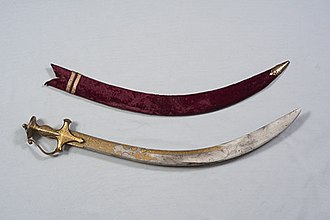
However, peace with the British did not last long. The Third Mysore War broke out in 1790 when the British East India Company convinced the Marathas and the Nizam of Hyderabad to attack Mysore from multiple sides. This began a four-year struggle for Tipu Sultan to defend his kingdom.
Tipu fought valiantly but the odds were stacked against him. The Mysore army faced the combined forces of the British, Marathas, and Hyderabad.
In 1792, the British forces advanced on Tipu's capital Srirangapatna and laid siege to it.
Treaty of Srirangapatna – 1792
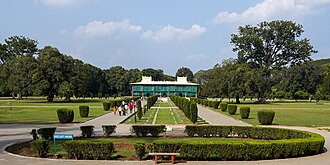
Tipu was forced to sign the Treaty of Srirangapatna in 1792 after the siege.
The treaty resulted in half of Mysore's territories being ceded to the British and their allies.
Tipu also had to pay a large war indemnity and surrender two of his sons as hostages to the British.
This was a humiliating defeat for Tipu Sultan.
Period of Rebuilding
In the following years, Tipu worked to rebuild his military and replenish the state treasury.
He formed diplomatic alliances with France and the Ottoman Empire to counter the British threat.
Fourth Mysore War – 1799 – The Final Blow by British
In 1799, the British East India Company came for Tipu Sultan again in the Fourth Mysore War.
This time, the Nizam of Hyderabad allied with the British against Mysore.
The British army marched into Mysore in February 1799 and advanced towards Srirangapatna.
Tipu Sultan resolved to defend his capital to the end. In April 1799, the British forces besieged Srirangapatna with a large army. Tipu's forces were heavily outnumbered this time.
Fall of Srirangapatna
On May 4, 1799, the British breached the walls of Srirangapatna and stormed the fortress.
Tipu Sultan died fighting bravely in the ensuing battle. He was found dead in the northeastern ramparts, dressed in his finest clothes and with his sword in hand. Tipu was 48 years old at the time of death.
British Takeover
With Tipu Sultan's death, Mysore lost its independence and became a princely state under the British Raj. Much of the Mysore treasury was seized and plundered by the British forces.
Tipu Sultan's family, including his sons, were imprisoned or exiled by the British.
Many of his relatives and loyal officials were also killed or punished after his death. The British sought to erase Tipu's legacy and influence.
Little Known Personal Life of Tipu Sultan
Tipu Sultan's personal life is not very well documented. It is known that he had multiple wives, as was common for rulers at the time. Two of his notable wives were Khadija Zaman Begum and Lakshmimani.
Tipu had several sons from his wives, including his eldest sons Fateh Hyder and Abdul Khaliq. His younger sons Muiz-ud-din and Mu'izz-ud-din were the ones taken as hostages by the British after the Third Mysore War.
Not much is known about Tipu's relationship with his wives and children.
He was likely often away on military campaigns during his reign. Running the kingdom and fighting the British would have occupied most of his time and energy.
Tipu Sultan was a devout Muslim but generally practiced religious tolerance towards Hindus and Christians in his kingdom.
However, at times, he showed brutality at times towards enemies and those he suspected of being disloyal.
Legacy of Tipu Sultan Remains
However, Tipu Sultan's legacy as a valiant "freedom fighter" against British colonialism endured in the collective memory of Indians.
He became an iconic figure, especially for Muslims in India, and an inspiring symbol of resistance against the British.
Tipu was a complex figure who evoked both admiration and controversy.
He was a strong ruler and military innovator who expanded his kingdom and stood up to the mighty British East India Company. But he also at times demonstrated ruthlessness in his campaigns and rule.
Tipu Sultan left behind a rich legacy not just as a military leader but also as an administrator and innovator.
He made various reforms and innovations in his kingdom of Mysore during his 17-year reign.
Agriculture
In agriculture, Tipu worked to increase cultivation and expand irrigation networks.
He gave tax relief to farmers and encouraged the growth of cash crops like cotton and sericulture.
Trade
To improve trade, Tipu built strategic roads connecting Mysore to ports on the Malabar Coast.
He also developed the port of Mangalore and welcomed foreign merchants. Mysore's silk and spice trade flourished under him.
Science & Technology
Tipu Sultan had a keen interest in science and technology. He was an early pioneer of rocket artillery and established advanced armament factories in Mysore to produce rockets, cannons, and other weapons.
Famous Rockets
Some historians have noted that Tipu's famous Mysore rockets, with their metal casings, represented a significant innovation in military technology at the time.
Tipu deployed them effectively in wars against the British, who were impressed by their range and destructive power.
Art & Literature
Tipu was a patron of art, architecture and literature.
He sponsored various construction projects including palaces, fortifications, and public buildings. The famous Daria Daulat Palace in Srirangapatna was built during his reign.
Multilingual Scholar
Tipu Sultan was a multilingual scholar who had a library of over 2000 books in multiple languages. He was a poet himself and wrote the dreams he saw in his sleep in a book called ‘Khwab Nama’ (Book of Dreams).
Struggles & Challenges for Tipu Sultan

Despite being an able administrator, Tipu Sultan's 17-year reign was marked by his constant struggles against the British East India Company and other powers like the Marathas.
The four Mysore Wars that were fought during this period took a heavy toll on the population and resources of Mysore.
Tipu had to heavily tax the people to fund his military campaigns and maintain his troops.
There were also communal tensions and religious fault lines in the diverse society of Mysore, which had a mix of Hindu and Muslim populations. Tipu's policies and actions were sometimes seen as favoring Muslims over Hindus.
Mixed and Conflicting Narratives
Some historians argue that Tipu was a secular ruler who donated to Hindu temples and had Hindus in his administration, while others accuse him of persecuting Hindus and Christians, especially during his invasion of Malabar.
These conflicting narratives around Tipu Sultan fuel controversy about his legacy even today.
In 2015, the Congress government in Karnataka tried to celebrate Tipu's birth anniversary as "Tipu Jayanti" but faced opposition from right-wing groups who see Tipu as a "religious bigot".
Beyond these debates, Tipu Sultan's place in history as one of the fiercest opponents the British faced in India is assured.
He refused to submit to the British and fought them until his last breath, making him an iconic figure of India's early resistance to colonialism.
Tipu's military innovations like the Mysore rockets left a lasting impact.
The British were so impressed by the rockets that they took some back to England and developed their own rocket artillery based on them.
Some say this technology eventually led to the development of the Congreve rockets, which the British used in the Napoleonic Wars.
Even today, Tipu Sultan's memory evokes strong reactions and his legacy is debated.
To many, he is a valiant freedom fighter and a visionary ruler who stood up to the mighty British Empire. To others, he was a tyrant who persecuted religious minorities.
The complex and conflicting narratives around Tipu Sultan are a reminder of how history is seldom black and white.
Historical figures were products of their time and context, with their own mix of achievements and flaws.
In recent years, there have been calls to examine Tipu Sultan's legacy more objectively, moving beyond the simplistic "hero vs villain" binary.
Historians have sought to present a more nuanced picture, acknowledging both Tipu's strengths and weaknesses.
For example, while Tipu fought against British colonialism, he was not above using violence and coercion himself in expanding his kingdom.
And while he instituted some progressive reforms, he also had a complex relationship with his Hindu subjects that defies easy categorization.
Summing It Up - Conclusion
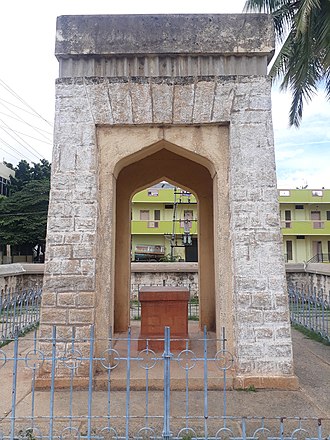
When we sum up the life, struggles, wars and challenges, Tipu Sultan's life and legacy serve as an important chapter in the long history of India's encounter with colonialism.
His valiant resistance to the British, albeit unsuccessful in the end, gave inspiration to later generations of Indians who eventually won India's independence.
The story of Tipu Sultan is thus a story of courage, conviction, some contradiction and some inspiration for his chivalrous acts in his personal and professional life.
It deserves to be studied and understood in all its complexity, as we continue to make sense of India's past and its impact on the present.
Tipu's tiger-striped banner and sword are now artifacts in museums, but his memory endures in the collective consciousness of India, forever tied to the country's struggle for freedom.
And this struggle against British colonialism in India finally concluded in 1947 when two countries were made; India and Pakistan; independent and free from British Raj.
You can also read Wiki Article on Tipu Sultan
You may also browse other History Stories & Articles on IdeasBeat